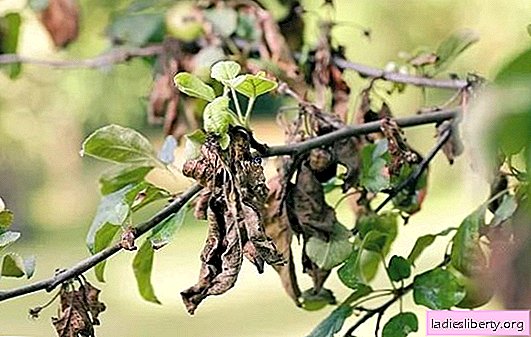
Almost all of the past millennium - with cabbage soup and porridge, as the proverb says, as chroniclers and historians claim. Maybe this is a strong exaggeration, but the history of Russian cuisine does not know other popular long-lived dishes, except for breads and all kinds of pies. Kvass, jelly while we leave aside. Let's talk, for example, about cabbage soup with fresh chicken and chicken.
This choice is not accidental. Of course, cabbage soup from beef brisket and sauerkraut in various variations, even in the opinion of foreign tourists, is an indispensable classic of Russian cuisine, but in the end I want, at least, some kind of variety for a thousand years!
Chicken meat is an anti-crisis, nutritious and dietary option for cabbage soup. This is the first. In a modern kitchen, with the latest technical capabilities, you can afford to dream up and expand your culinary horizons. This is the second. Of course, we will not retreat from the basic principles by which we can distinguish ordinary cabbage soup from real cabbage soup, from a sense of patriotism and to preserve Russian culinary traditions.
Fresh cabbage cabbage with chicken - the main technological highlights
To begin with - briefly about the ingredients that cabbage soup can consist of. Surprisingly, the fact remains: very simple cabbage soup, not as simple as it seems at first glance. It is enough to look at the composition of the ingredients for cabbage soup in two or three old cookbooks, how striking: cabbage soup can consist of everything that will be at hand at the time of their preparation, as in the Russian fairy tale about porridge from an ax.
But, despite all the variety of components, the basic composition of the ingredients for the soup is strictly regulated by traditions and the special cooking technology peculiar only to Russian cuisine. The composition of the ingredients matters, as does the technology for preparing the first course.
Russian cabbage soup is, of course, cabbage or another green mass that replaces it.
Without cabbage, sorrel, nettle or other green mass, rich in vitamin C, on the table - anything but cabbage soup. But, if in the first dish there is cabbage and beet root, for example, then this is borsch, but the leaves of this vegetable rich in fiber can be added to cabbage soup. Traditional cabbage soup is made from sauerkraut or sorrel, as these components give the dish a characteristic sour taste. Fresh cabbage also has a valuable mineral and vitamin composition, but there are not enough organic elements in it that form the acidic taste of cabbage.
Therefore, when using fresh cabbage for an acid dish, they give the dish with the help of the second obligatory component - acid dressing.
The role of acidic dressing and whitewashing at the same time in traditional cabbage soup is performed by sour cream.
Why sour cream? Maybe because it is just delicious and beautiful, or maybe because our distant ancestors intuitively chose this product to replace cabbage brine, which also contains lactic acid, and has a very positive effect on digestive processes, since the content of probiotics is not inferior dietary kefir. A tomato in cabbage soup appeared as an acidic dressing much later, mainly in the southern regions of Russia, where it began to be developed as an agricultural crop. In the absence of tomatoes, in addition to dressing from cabbage brine, sour cream, apples and mashed sour berries were used for summer cabbage soup from fresh cabbage.
In addition to cabbage and acidic dressing, cabbage soup or at least water is needed for cabbage soup.
We immediately indicate the volume of liquid: in cabbage soup, the ratio of solid and liquid ingredients should be approximately the same, according to modern standards, and folk wisdom says that cabbage soup should be "so that the spoon stands." Choose the consistency that your soul desires.
The broth can be prepared from any meat or fish, or several types of meat or fish, or meat and fish together. These products were laid in the boiler in different ways. Pork, lamb, beef and large game meat were cooked in large pieces until they were completely digested. The bird was plucked, gutted, and also cooked whole. Cut meat for cabbage soup and soups began later, under the influence of European cuisine.
Often after a rich feast, the next day, the remains of baked meat were used in soup soup. Note that in history and literature there are descriptions of Russian feasts, where dinners totaled up to fifty changes, and meat was served in whole carcasses. So do not think that the remains of such a table are miserable crumbs or bones. Baked meat with spicy roots, other vegetables and fruits produces a very unusual and tasty red broth for the first dishes. Try it at your leisure.
Given that Orthodoxy is a national idea, rooted in the minds of the Russian people, there are no less recipes for lean soup than on the basis of meat broth. Mushrooms, as an alternative to fast-moving meat broth, occupy a special place in Russian cuisine, and they wonderful complement meat. By the way, mushrooms go well with chicken and other birds in any form.
You can do without meat, fish and mushrooms, cook cabbage and onions, add sour cream or flour whitewash - and cabbage soup is ready.
Spicy roots and spices are an essential component of cabbage soup.
In Russian cuisine, dill, parsley and celery (leaves and roots), onions, garlic, mint, lemon balm, and juniper were and remain traditional. As for spices, black and allspice, bay leaves are used for cabbage soup, less often coriander, cardamom, cloves, nutmeg. This traditional set in all dishes of Russian cuisine has been used for several centuries in a row, which is also associated with a number of objective historical and geographical conditions. In general, serving the device with spices on the table is a Russian tradition in which a certain hint is caught. Even a few hints: a manifestation of hospitality, an offer to salt and pepper on your own so as not to be offended by the owners, and a demonstration of prosperity - "there is everything in the house, and nothing is sorry for the guests."
The cabbage soup is seasoned with spices twice during the cooking process: first, roots and spices are added to obtain a fragrant meat, fish or mushroom broth, while giving a spicy taste to meat or fish, and spicy greens and spices are added to the cooking end to finally form the desired aroma of cabbage soup.
Russian cabbage soup is characterized by whitewash, which also belongs to the obligatory components of the dish.
As already mentioned, the role of whitewash in the modern kitchen is often performed by sour cream and other dairy products. In the old recipes of cabbage soup, fried flour combined with fat and a small part of the broth was used as whitewash. This mixture was poured into a cauldron with cabbage soup at the last stage of preparation, and then cabbage was seasoned with chopped greens, just before serving. Milk or cream was also added directly to the total mass, and sour cream, as now, was served separately.
Flour whitewash is an option for cooking lean soup, and in old recipes it is most often found in peasant cuisine, in poor soup. It should be noted that, despite the use of whitewash, masking the transparency of the broth, the preparation of the latter was still treated carefully, like the French cooks, who own the opening of the transparent broth. In any case, the French themselves think so.
Vegetables, in addition to the above, the required ingredients, as well as all kinds of beans and cereals, are additional components that expand the recipe range of the dish.
Other vegetables in ancient recipes for cabbage soup, as additional ingredients, are also very diverse. In the "pre-potato" period for nutritious cabbage soup, turnips and rutabaga were used. Now these original Russian root crops are exotic on our table. We should think about their return, given that in comparison with potato tubers, a good turnip enhances immunity, normalizes blood sugar, while a favorite potato increases it very much. Yes, and the almost forgotten taste of turnips is much more interesting. Apparently, the Russian peasants were not in vain resisting the royal decree to eat potatoes, intuitively sensing the intrusion of a huge amount of carbohydrates, which nutritionists and everyone who is preoccupied with a slim figure are fighting today.
Even with the appearance of potatoes on the Russian table, they rarely added it to cabbage soup. Firstly, the unicomponent nature of the dish is a characteristic feature of Old Russian cuisine, and the habit, as they say, is second nature. Secondly, cabbage soup is completely self-sufficient and nutritious if they are cooked in accordance with all the rules and on meat broth. The presence of a large number of vegetables in cabbage soup is justified if they are lean.
Already at the turn of the nineteenth and twentieth centuries, beans began to be added to the composition. Until that time, peas and lentils were widely used from bean cultures in Russian cuisine, and Turkish beans were known and used in the kitchen for the nobility. There are many recipes of ancient cabbage soup, which include cereals. All these components are used in regional cuisines now.
The composition of the ingredients for cabbage soup is more than diverse, as can be seen from the foregoing. They can be combined at your discretion, observing the technology of cooking the cabbage at each stage.
The features of the technology of ancient Russian cuisine include heat treatment. Russian ovens contributed to the fact that the food in them was prepared either baked, stewed, or boiled, while European kitchens were arranged in such a way that the hearth was on top and was open. Such stoves made it possible for the cook to simultaneously carry out various heat treatment operations: cooking, frying, and poaching. Therefore, complex heat treatment is more typical of European cuisine, and in Russia such stoves began to appear only in the Petrine-Catherine era, mainly in noble houses. In addition, Russian cuisine until the second half of the twentieth century had a strict social hierarchical division: the master's food was prepared mainly in the French, German, Swedish and Dutch style, although it still had elements of technology inherent in Russian cuisine, and peasant food was prepared in a classic way. in a patriarchal way, that is, in the Russian oven.
Modern kitchen appliances work on the principle of a Russian oven: ovens, microwaves, multicookers provide the same stew or stew, which was the main principle of heating in a Russian stove. It is such a thermal regime that helps to keep the maximum of vitamins in the dish, ensures uniform heating of the dishes, which, by the way, can also be discussed separately and for a long time, but next time. Now we will limit ourselves only to a general remark: if you want to cook real cabbage soup in the old Russian style - use an oven heated to 85-100 ° C and heat-resistant dishes with thick walls.
Of course, in special cases, the methods of complex heat treatment are acceptable for cooking: in the end, the influence of French cuisine cannot be undone, and it also became part of the history of Russian cuisine three hundred years ago.
It's time to cook cabbage soup. We go into the kitchen and check the stocks. Variants of cabbage soup, made from fresh cabbage with chicken, are attached below, but they are not a dogma. If necessary, they can be taken as a basis, as an idea.
1. Fresh cabbage soup with chicken, mushrooms and creamy lemon dressing
For cooking:
Eggs 3 pcs.
Chicken, gutted 1.5-1.7 kg
Bulb, large 120 g
Carrot 90 g
Lemon 150 g
Cabbage 0.7 kg
Parsley root and leaves
Dill
White pepper
Cream, ghee (10%) 300 ml
Cooking:
Cook the chicken stock, strain. Twenty minutes before the end of cooking, add parsley, carrots, washed onion in the husk, with the cut root part. Put the meat on a plate. Divide into portions. Separate and cool 0.5 L of finished broth. Whip the cream by adding eggs in them, and then the chilled broth. Stir the mixture well and pour back into the pan. Bring to a boil and put chopped cabbage. Reduce the heat and simmer it until soft. Add spices, fresh spicy greens, zest and lemon juice. Turn off the stove and serve cabbage soup with meat and sauce of sour cream with garlic and pepper.
2. Red cabbage soup with chicken and lentils
You will need:
Chicken thighs 6 pcs.
Onions 300 g
Garlic 40 g
Combined fat 100 g
Cauliflower 600 g
Carrot 200 g
Red lentils 150 g
Nutmeg
Clove
Celery
Thyme
Parsley
Ground chili
Sugar (or honey) 50 g
Salt
Dry wine 350 ml
Order of preparation:
Put the processed meat on a baking sheet lined with foil, grease with fat mixed with honey and spices. If you use sugar, then it must be combined with spices. But do not salt. Between the meat put slices of carrots, onions (halves), spicy roots. Bake the meat in the oven, then put it in a pan, pour cold water, cook in the simmer mode. Season with fresh roots again. Pour the finished broth through a sieve, return everything back to a clean pan, and add the prepared lentils. Let the cabbage inflorescences in a saucepan, seasoned with nutmeg, cloves and thyme. When the lentils become soft, add cabbage, wine to the cabbage soup and let it boil. Put fresh herbs, check for taste. Twenty minutes after infusion, serve with sour cream.
3. Fresh cabbage cabbage soup with chicken and pickled mushrooms
Products:
Butter, ghee 150 g
Onion 350 g
Spinach, chopped 250 g
Cabbage seedlings 500 g
Salty (or pickled) loaves of 300 g
Chicken Broth 2.4 L
Breast, chicken - ½ pcs. per serving
Roots, spicy
Spice
Boiled eggs (yolks) 3 pcs.
Sour cream 250 g
Mustard 30 g
Greenery
Cooking:
Heat the cast-iron pot on the stove. Put butter, chopped parsley and celery roots, onions. Sauté the vegetables until soft, lay on top slices of chicken breast sliced mushrooms. Add chopped cabbage leaves and spinach, fill everything with chicken stock and put in a preheated oven for forty to fifty minutes. Do not forget to cover the pan with a lid.
Mash boiled yolks with sour cream and mustard, salt. Dilute the mixture with a small amount of warm water or broth and pour into the pan five minutes before the end of cooking. Check cabbage soup for taste. Sprinkle with herbs when serving.
4. Fresh cabbage cabbage soup with chicken, beans and tomato dressing
Products:
Rooster 2.0-2.2 kg
Water 4.0 L
Spices for cooking broth
Tomatoes 1.2 kg
Ground coriander
Sugar
Salt
Bay leaf
Red pepper
Onions 300 g
Carrot 200
Bacon 250 g
Potato 400 g (net)
Cabbage, white 500 g
Boiled beans (or canned) 300 g
Greens chopped
Garlic
Spice
Sour cream (20%) 250 g
Order of preparation:
Simmer the broth from an old bird over low heat (see tips for how to do this).
Blanch the tomatoes, remove the peel and wipe through a sieve to remove the grains. Put spiced spices in the juice.
Cut a soft bacon, melt the fat in a preheated pan and use a slotted spoon to remove the rest of the solid particles of fat. Slice and fry the onions and carrots in melted fat. Transfer to a pan for cabbage soup roast. Top with beans, chopped potatoes and chopped cabbage. Pour juice and broth. Cook in the oven. Check the potatoes and add spices with salt to taste. Sprinkle chopped spicy greens. Let the cabbage soup stand a little under the lid.
Serve sour cream separately.
5. Cabbage soup with chicken and buckwheat
Required Products:
Chicken broth 1.5 l
Chicken liver, stomachs 0.6 kg
Margarine (for passivation)
Onions 300 g
Wheat flour 120 g
Cauliflower 0.5 kg
Spice
Sour cream, non-fat (15%) 0.5 kg
Buckwheat groats 180 g
Dill, leaf 90 g
Salt
Cooking method:
Chop the onion and sauté it in a cast-iron pan, in which cabbage soup will be cooked. Add offal here. Roll cabbage inflorescences in flour, fry on margarine separately, over high heat. Transfer to the pan. Wash and sort the buckwheat. Pour it on a dry frying pan and steam until the liquid is removed and a characteristic odor appears. Add cabbage and groats to the contents of the pan. Combine the warm broth with sour cream and pour into a pan. Cook soup for 20 minutes with minimal heating of the stove. Add spices, dill, salt.
You can replace cauliflower with white cabbage.
6. Lazy cabbage soup with chicken in the oven
Ingredients:
Kefir 900 ml
1.5 kg chicken fillet
Broth, meat 1.8 l
Celery 120 g (root)
Parsley, dill (leaves) 90 g
Spice
Curry
Lemon 1.2 pcs.
Onions 300 g
Cabbage 700 g
Long steamed rice 150 g
Margarine
Cooking:
Wet the washed rice, leaving it in water for at least 2 hours. Wash the meat, chop, season with spices, lemon zest, sprinkle with juice. After an hour or two, fry the fillet on margarine, over high heat, until half cooked. Add onions, lightly darken and transfer to a pan. Add grated celery root, curry and other spices. Also put rice, after draining water from it. Put chopped cabbage on top of meat and rice. Mix the broth with kefir and pour into a pan, cover. Put in the oven for an hour and a half, simmer at 100 ° C. Add salt, chopped parsley and spices to the prepared cabbage soup to taste.
Fresh cabbage soup with chicken - useful tips
- The rich broth is obtained from a rooster. The prepared carcass should be completely lowered into cold water and slowly boiled until half cooked, I constantly remove the foam. To make the meat fragrant, put spices inside the rooster and sew the abdomen with a thread. Transfer the finished meat to a dish, remove the threads and roots. Salt the prepared meat separately, removing from the broth, until it has cooled.
- You can enhance the smell of mushroom broth by adding powder from dried porcini mushrooms to it, before cooking.











